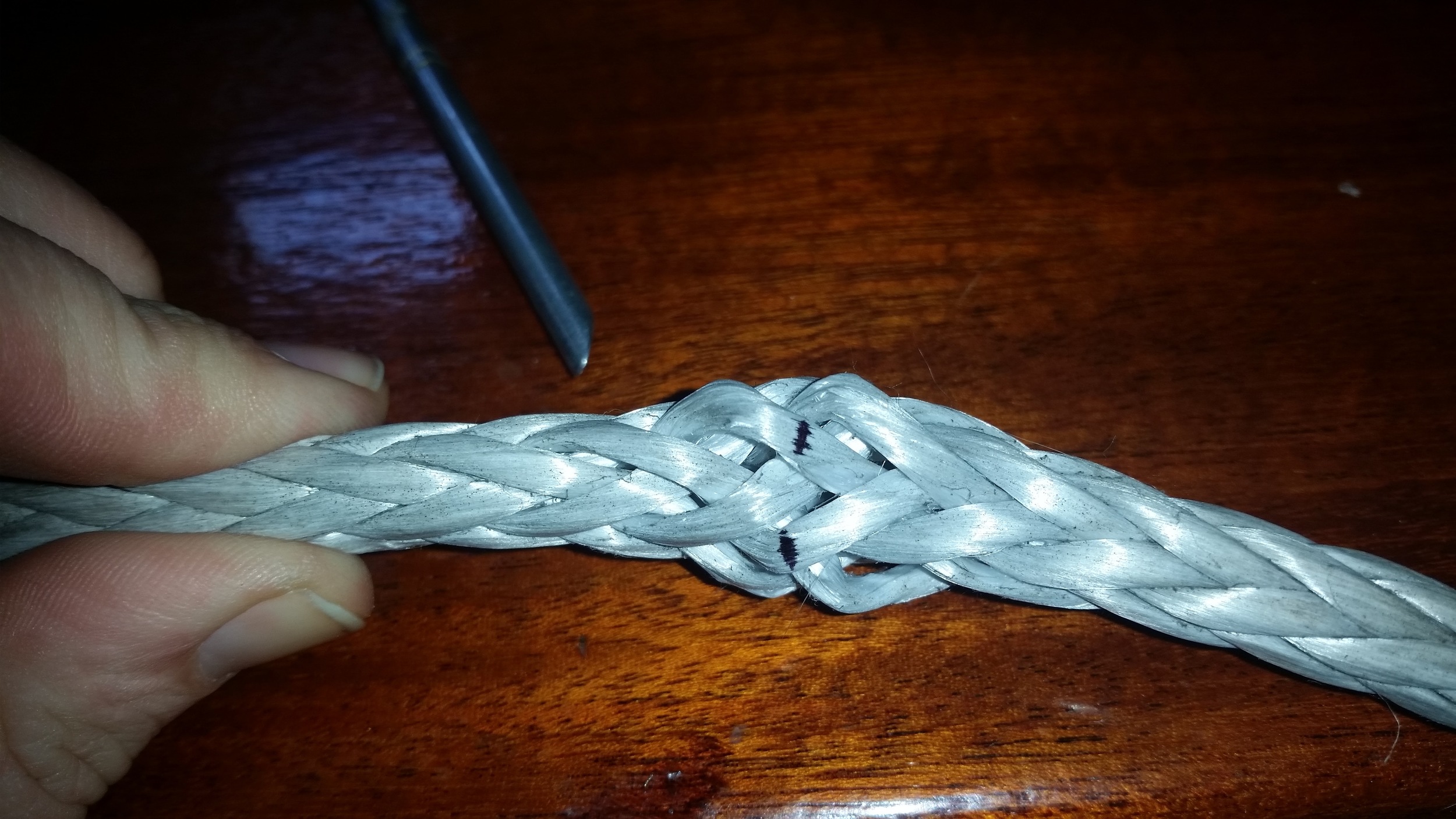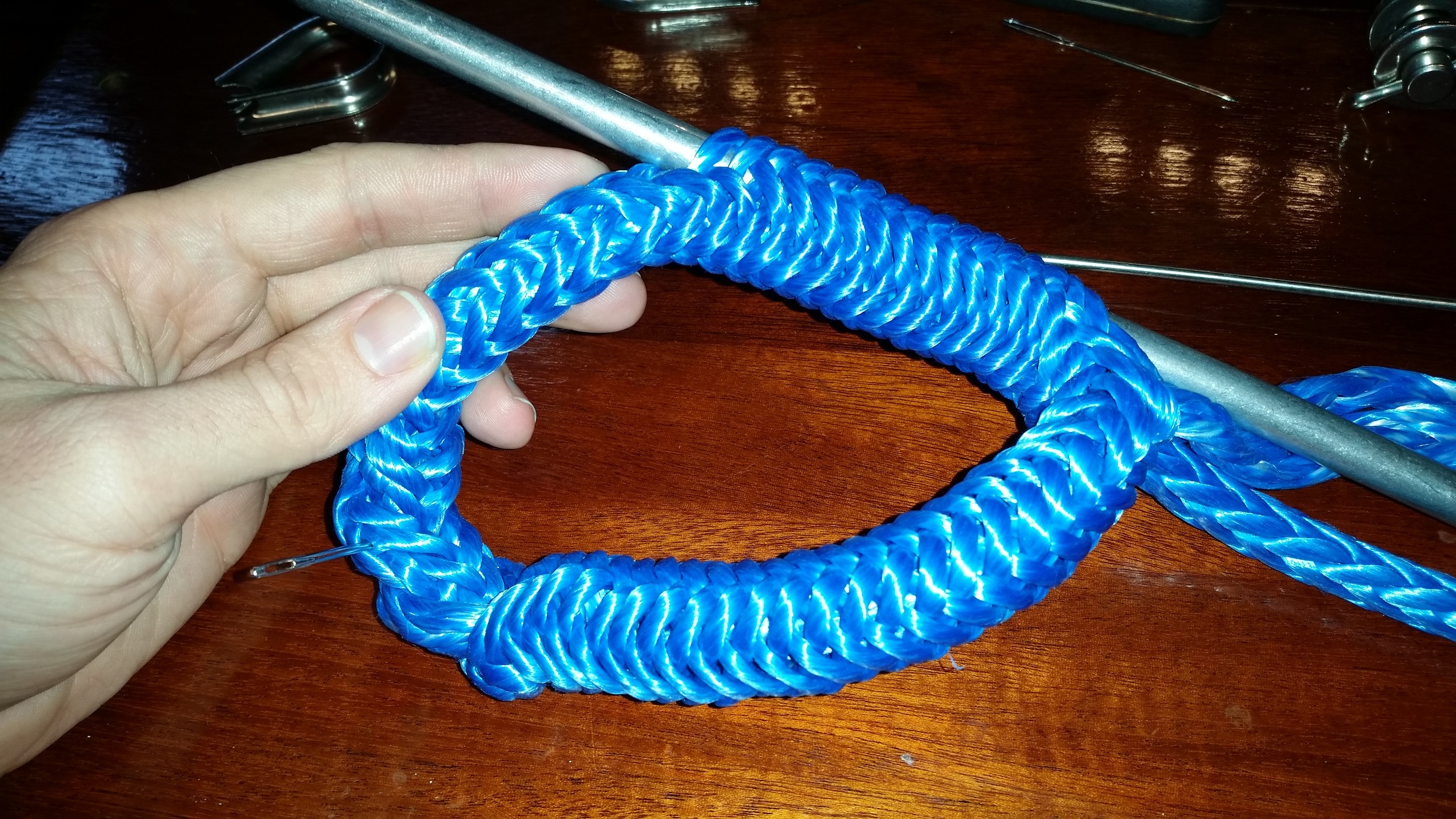When setting up your reef lines, you have many choices.
Single Line Reefing
Double Line Reefing
Slab Reefing
I want to discuss the clew lines which are run in a similar fashion through the sails in all of these different systems. The standard way of running the clew lines involves running the clew line from a fixed point on the boom, up through the sail's clew cringle, and down the other side of the sail. This will pull the sail down to the boom when reefing, but it will also bunch up under the cringle and get pulled into the cringle by the reef line. This can pull a chunk of sail through the cringle with the line and make a nice hole in the leech. To fix this problem, the clew line can be run a different way and avoid the whole problem all together.
Standard reef line setup
Alternate reef line setup
The alternate way to run the clew reef line is to pass it up between the boom and sail (putting the line on the same side as the cheek block), through the cringle, over the leech and back down the same side to the cheek block. This will cause the sail to be pushed to the side of the boom as the reef is being drawn in. Since the sail is out of the way, it will not bunch up and get pulled through the cringle. While this sounds wonderful, it will cause more wear on the leech of the sail, leading to chafe issues which are easily remedied with chafe patches.
The sail will be dumped to the side of the boom, avoiding any risk of it getting caught in the cringle and torn. It is helpful to have lazy jacks to collect the sail as it gets tossed to the side.


































































